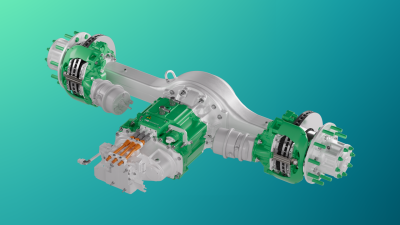What is hydrogen grading and why is it useful?
Hydrogen plays a significant role in decarbonization as the world strives to limit global warming. With the increased spotlight on this critical clean energy source, colorful terms such as green hydrogen, blue hydrogen and grey hydrogen have entered the increasingly complex lexicon of sustainability buzzwords. But what does a system of color-coding mean, and why is it useful?
Hydrogen has been used as fuel for more than two centuries. Though thousands of vehicles and machines worldwide are powered by hydrogen fuel cells today, the complexities and cost of hydrogen production have hindered its wide-scale adoption in the past.
Hydrogen is the most abundant element in the universe, but it doesn’t occur naturally on its own. Hydrogen must be produced by separating it from other elements, such as water or fossil fuels. There are various ways to do this, and each process uses different amounts of energy and produces different greenhouse gas emissions.
As a clean energy source, it is crucial to differentiate hydrogen by the production method used to understand the full picture of its environmental impact.
Why a hydrogen "rainbow?"
The hydrogen rainbow is a simple way for people not working in or familiar with the clean energy industry to understand the options around this exciting energy solution. It is worth noting that all hydrogen is an invisible, colorless gas. Unfortunately, no hydrogen is actually pink, yellow or turquoise in visible color.
Instead, the colors are a handy tool to classify and remember the types of hydrogen.
The colors – while not reflecting scientific properties – used to label the production methods are meaningful in some cases and arbitrary in others. Green hydrogen, unsurprisingly, is the most sustainable option with the least environmental impact. Meanwhile, turquoise hydrogen gets its name because its production process is between green and blue. The hydrogen rainbow continues to expand as innovative new hydrogen production methods are introduced.
Green hydrogen
Green hydrogen has no carbon emissions and is created using renewable energy sources like solar, wind and hydropower to electrolyze water. Electrolyzers use an electrochemical reaction to split water into its components of hydrogen and oxygen.
Green hydrogen is the only hydrogen that emits zero harmful emissions during production. While the benefits of green hydrogen are significant, its production is more expensive and makes up a very small percentage of hydrogen production. As new advances and innovations in green hydrogen are made, prices will come down, and usage will grow.
Green hydrogen is the primary focus of Accelera™ by Cummins electrolyzer technologies. With proton exchange membrane (PEM) technology in its portfolio, Accelera electrolyzers actively produce green hydrogen in Bécancour, Canada, with a 90-megawatt (MW) system. Most recently, Accelera announced a 100MW system commissioned in partnership with bp.
Yellow hydrogen
A subset of green hydrogen, yellow hydrogen is produced through electrolysis generated by solar power.
Grey hydrogen
Grey hydrogen is created from natural gas – typically methane – through a process called steam methane reforming (SMR). The most common form of hydrogen production, grey hydrogen, makes up 95% of hydrogen production in the United States and has the lowest cost. The greenhouse gases made in the process are not captured.
Blue hydrogen
Like grey hydrogen, blue hydrogen relies on the conventional process of SMR.
The key difference is the usage of carbon capture and storage (CSS). CSS traps the carbon dioxide from the reforming process and sequesters it underground. This technically lowers the emission threshold, but direct methane and hydrogen leakage from storage carbon pockets are a concern.
Blue hydrogen has been called low carbon due to CSS, but there is still debate surrounding whether the use of SRM with CSS can truly be considered a “low carbon” process.
Turquoise hydrogen
One of the newer colors to join the hydrogen spectrum is turquoise hydrogen. Falling between green and blue hydrogen, turquoise is produced via a process called methane pyrolysis. This is a high-temperature process that converts methane into hydrogen gas and solid carbon – like coal or biomass – in the presence of a catalyst. No carbon monoxide or carbon dioxide emissions are created.
While turquoise hydrogen has no proven impact at scale yet, it has potential as a low-emission solution if scientists can find ways to power the thermal process with renewable energy and adequately use or store the carbon byproduct.
Pink hydrogen
Pink hydrogen taps into nuclear energy to fuel the electrolysis required to produce it. The high temperatures of the nuclear reactors provide an additional benefit — the extreme heat produces steam that can be used for electrolysis or fossil gas-based steam methane reforming in other forms of hydrogen production.
Brown and black hydrogen
Black and brown hydrogen represents the traditional process for making hydrogen – the gasification of coal. Black coal (anthracite and bituminous coal) releases less CO2 per unit of energy produced than brown coal (lignite), but that doesn’t mean the gasification of black coal is desirable. It is still the most environmentally damaging hydrogen production process.
White hydrogen
White hydrogen is a naturally occurring, geological hydrogen found in underground deposits. Universities, companies, and research and policy organizations are exploring the potential of this hydrogen and its extraction impact.
Naturally occurring hydrogen has also been called “gold” hydrogen, but gold hydrogen might end up in its own category soon. While there is still debate surrounding it, gold hydrogen is the extraction of hydrogen from fermenting microbes found in depleted oil wells.
The rainbow’s impact
Hydrogen can provide a clean fuel source and heat for homes, transport and industry. But its green credentials vary depending on how it is produced. Though the rainbow has been criticized in some places for oversimplifying the nuances of the production processes, it has undoubtedly helped people to learn about the options and their upsides and downsides. The colors have made it easy to remember these potentially complex messages, which options are the best, and to better understand an exciting new clean energy solution.

